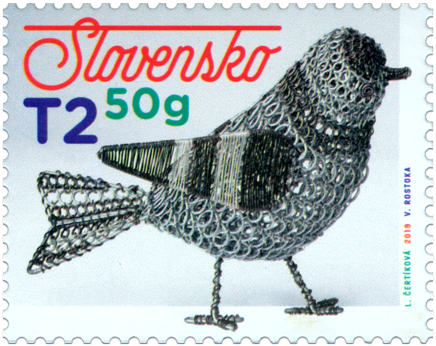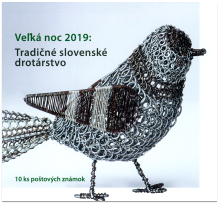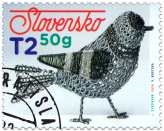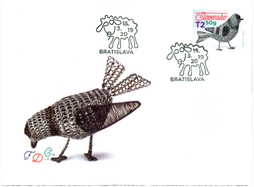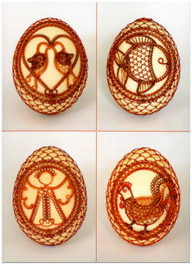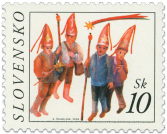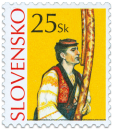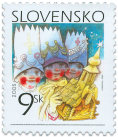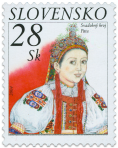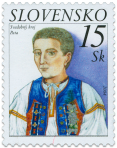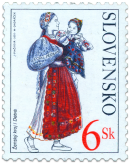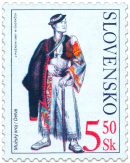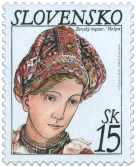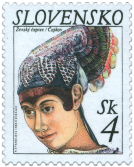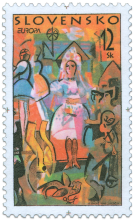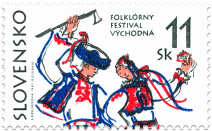679 Date of issue
15.03.2019 Face value
0.90 € Sell price
0.90 €
Tinsmithing is a unique craft form typical of our country – as evidence of this we can see that in 2017 it was included in the Representative List of the Intangible Cultural Heritage of Slovakia. Not only do its specific features make it different from other crafts, but its specific form still exists today and has become an integral part of our national culture and art. It originated as a form of supplementary employment for the people that inhabited infertile lands in Northwest Slovakia more than 300 years ago. It has undergone a difficult development, which was reflected not only in the ways in that wire and later tin sheets were used, but also in the status of the craftsmen. Despite it initially being an itinerant craft, many of the poor tinsmiths later became successful entrepreneurs, who established prosperous workshops all over the world. The first tinsmiths repaired damaged ceramic dishes or agricultural tools. Later they began to produce simple functional objects, such as mouse traps, pipe picks, ladles, pot and iron holders, bowls, hangers and many other practical products. Wire became increasingly popular, in particular due to its ready availability and excellent functional properties. The number of tinsmiths increased and they spread to all the continents, establishing more than 320 workshops and small factories as well as 6 large factories. The latter manufactured an exceptionally wide range of functional objects made of wire and tin sheet. The further development of tinsmithing was interrupted by the First World War and the Russian Revolution. Most of the workshops ceased to operate and tinsmiths returned to their homelands. The process of the gradual decline of the craft finally ended during the Second World War. Wire was first used as a material in the fine arts in around 1940 to 1942, when the first wire sculptures were created for the newly-established Municipal Museum in Žilina. Since the 1960s, wire has become a permanent part of the works of many artists and craftsmen, who follow the traditional tinsmithing techniques and have enriched them using modern technologies.
Katarína Kendrová
The Museum of Považie in Žilina
Similar products
387 Date of issue
10.11.2006
380 Date of issue
09.06.2006
366 Date of issue
16.11.2005
323 Date of issue
16.04.2004
322 Date of issue
16.04.2004
229 Date of issue
22.02.2001
228 Date of issue
22.02.2001
174 Date of issue
12.03.1999
173 Date of issue
12.03.1999
175 Date of issue
12.03.1999
149 Date of issue
05.05.1998
119 Date of issue
12.06.1997
© 2024 POFIS - Postal philatelic service. All rights reserved

